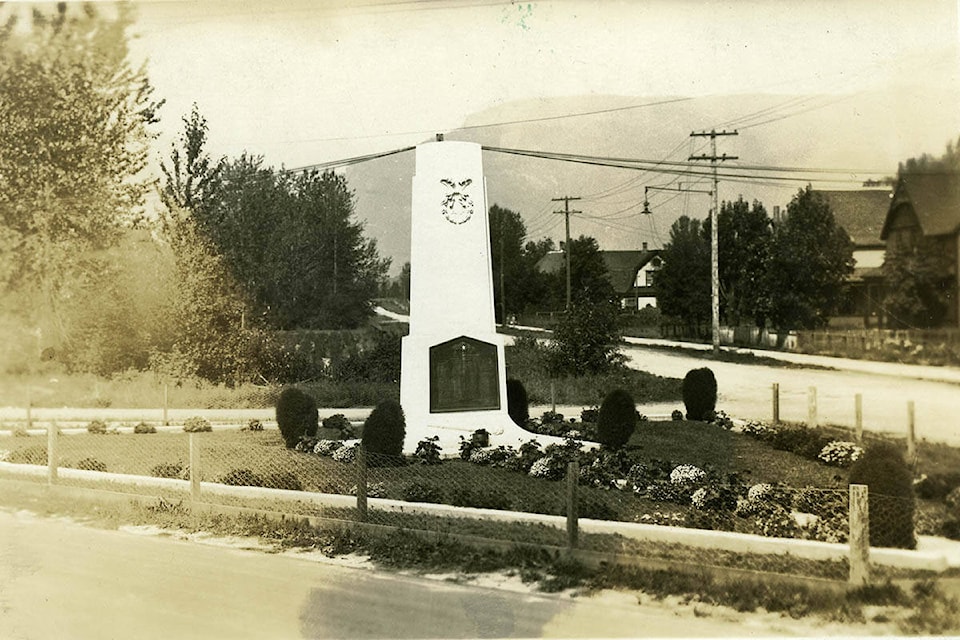The celebration of Armistice ending World War I on Nov. 11, 1918, took place in the middle of the Spanish Flu pandemic.
People took to the streets in large numbers to celebrate. This may have contributed to a second wave of the pandemic in much of the world.
Now, 102 years later, we find ourselves in the midst of the COVID-19 pandemic, and this is having a profound influence on how people live their lives.
Revelstoke’s Remembrance Day service is limited to a small number of people, preventing much of the community from coming together to remember as we do every year.
People are finding ways to remember in private, or in smaller groups.
In our family, we purchased a wreath in memory of Ken’s uncle, George English, who died during World War II, and Ken’s father, Jim English, who returned as a veteran after four years in Italy and North Africa. We will place the wreath prior to the service, as will many others.
READ MORE: Remembering John Augustyn: one of Revelstoke’s last Second World War veterans
Revelstoke contributed greatly to Canada’s military efforts, going back to the days of the Boer War in South Africa at the turn of the last century, and continuing through World War I and World War II, and more recent conflicts and peacekeeping missions.
More than 700 men and a few female nurses from Revelstoke served during World War I, with close to 100 casualties. Several hundred men and women also served during World War II, with another 33 casualties.
If you make a private visit to the cenotaph this year, read the names, and think about who they were, and the sacrifices that they made. Think about their families and their friends who were left behind, and those who worked hard for the war effort here in Revelstoke.
Revelstoke Museum and Archives has created Memory Books of the Revelstoke casualties from World War I. These stories are available to read on the museum’s World War I Profiles blog on our website: https://www.revelstokemuseum.ca/blog.
We also have information in the museum on the World War II casualties. Learning about the lives of these men make them come alive.
They are not just names carved in granite. They were real people who lived in Revelstoke, who worked for the railway, or in the forest industry, or in business, or in many other occupations. There were single men and married men. They were as young as 15, and as old as 45. Every death was a loss to the community.
There wasn’t a single issue of the newspaper during both world wars that didn’t contain some war news.
I am sure that the citizens of the time always knew that there could be more bad news in every issue.
Along with the sad news, though, were positive stories of people working hard for the war effort at home – buying Victory Bonds, planting war gardens, raising money for children in Europe who were impacted by the war, sending hundreds of parcels containing hand-knitted socks, candies, cigarettes, and letters from home.
In 2020, we commemorate the 75th anniversary of the end of World War II. Victory in Europe Day was May 8, 1945. The Revelstoke Review of May 10, 1945 published a message from the City of Revelstoke: “The people of Revelstoke will remember with gratitude and pride the gallantry of the sons and daughters of our own City who have played a noble part in the fight for freedom. We rejoice with them in this great victory. Yet the rejoicing must be tempered by the grievous memory of many young lives sacrificed for our liberties. Our deepest sympathies go to the bereaved families whose sorrow victory cannot assuage.”
The letter went on to encourage the purchase of Victory Bonds, recognizing that the war was not yet over.
Victory in the Pacific was August 15, 1945. In Revelstoke, the news was celebrated with church services and parades. Locomotive engine whistles and car horns proclaimed the news, and stores were closed as people came out onto the streets to celebrate. A local bagpiper, Jock Inkster, was loudly cheered as he paraded down the railway platform playing his pipes. Outdoor dances were held for two nights on Mackenzie Avenue. The relief and joy was tempered by the realization of the lives lost and the sacrifices made.
As we remember this anniversary, and mark a very different Remembrance Day, let us pause to remember all who have been impacted by war and conflict throughout the world, and reflect on what we can each do in our own way to bring about peace in our own communities, and in the world.
Contributed by Cathy English, curator, Revelstoke Museum and Archives.
